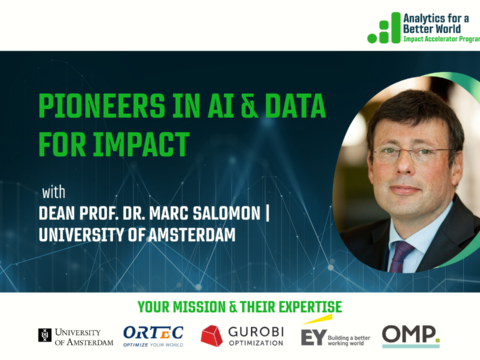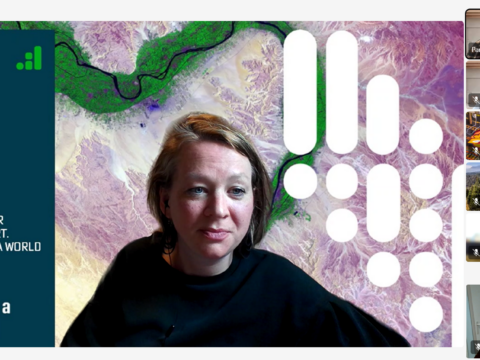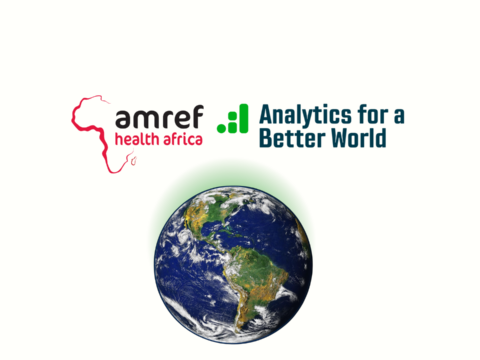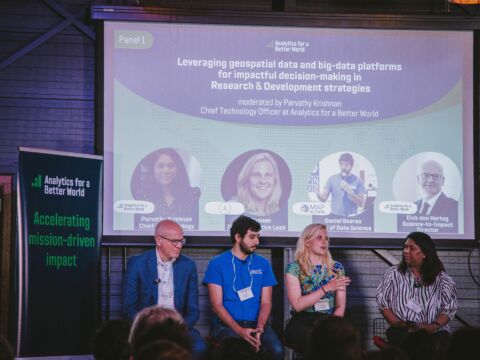Maarten Sukel
See profileStevan Rudinac
See profilePartner impact story: AI for sustainable cities and communities
“They’re not afraid to experiment here"

Stevan Rudinac and Maarten Sukel are trying to harness new technologies to make Amsterdam a better city for everyone - and their ideas are garnering support. "The world is becoming increasingly complex, cities are getting more crowded, but fortunately our arsenal of tools to analyse cities is expanding. We have to leverage our capabilities to keep cities liveable.”
The collaboration between Rudinac and Sukel did not come out of the blue: Rudinac is Sukel’s supervisor, who is working on his PhD. The two have known each other since Sukel first enrolled at the University of Amsterdam. Sukel is also AI Lead at the CTO innovation team of the municipality of Amsterdam, in which capacity he’s responsible innovations around artificial intelligence (AI). Rudinac is Associate Professor of AI for Business at the UvA Business School: “I’m a computer scientist: I try to facilitate access to and analysis of large data sets to help get to the bottom of metropolitan issues.”
Sukel and Rudinac work on improving urban livability with algorithms and have already collaborated on dozens of projects. “We always try to adopt a broad approach”, Rudinac begins, “to come to an understanding of what ‘liveable’ actually means. In the process, we have also been involved in projects that few would link to AI. What is a pleasant atmosphere? Why are people drawn to some things and not to other things? I also work on urban computing problems with Maarten and others.”
We always try to adopt a broad approach. In the process, we’ve also been involved in projects that few would link to AI.
Customer satisfaction significantly higher
AI plays a very important role in the so-called SIA, or Amsterdam Signals Support. “Right around the time that Maarten started working for the municipality as a data scientist, the newspapers kept running stories that complaints or other reports to the municipality weren’t processed quickly and accurately enough, if they were processed at all.
Sukel remembers how the first project they collaborated on involved making it easier for people to submit complaints and report issues. “In the past, people had to choose a department to submit their complaint to themselves and had to fill out endless forms. We lumped all possible options together and modelled the process, so now all you have to do is enter a query on meldingen.amsterdam.nl or call 14020 to automatically be forwarded to the right department. After this system was launched, customer satisfaction skyrocketed by about 40%.”
Rudinac laughs: “Maarten makes it all sound quite easy because he’s told this story a thousand times, but it was a world first. Several cities in the Netherlands, the EU and the rest of the world are looking to copy what we have built. When we launched this initiative in Amsterdam, everyone thought the city would come to a screeching halt: a machine to sort reports?” As it turns out, the system works just fine. “Suppose someone submits a nuisance report on Thursday evening because they can see a group of noisy people making a mess outside and their report is forwarded to Waste management instead of law enforcement. On the following Monday, they’ll be told that there wasn’t any noise or litter to speak of, and they’ll have submitted their report to no avail. With this system, you cut out the middleman and earmark the report as a ‘noise nuisance’ issue right away, which means it can be handled right away and might actually solved instead of just becoming another statistic.
It’s a lot easier to file a complaint now, so we’re getting more than ever before.
Resolving complaints with explainable AI
Rudinac briefly lists the multimodal methods and technologies used, ranging from natural language processing and information retrieval to computer vision: “It all starts with identifying the problem: what’s going wrong? In this case, the issue was that people were unaware of the various departments of the municipality of Amsterdam, or that they did not know which department to turn to. Suppose there’s a mattress in the middle of the street, blocking traffic. Do you call Traffic or Waste management? Even the municipal workers lost track of who to call, and when people realise that their reports aren’t acted on, they’ll stop complaining altogether.”
“It’s a lot easier to file a complaint now”, Sukel adds, “so we’re getting more than ever before. You could see this as a negative, because apparently more people have complaints than we thought before, but every complaint you solve helps eliminate a problem.” Automatic sorting had the biggest impact, Rudinac remembers: “We deliberately chose to keep the model simple and explainable.”
Why do we need explainable AI?
“If you’re using algorithms, it’s very important to be able to justify what you’re doing”, Maarten explains, “especially if you’re a public body. That’s why, in some cases, a simple technique that’s easy to explain could be preferable to a slightly more effective but significantly more complicated option. We also launched several initiative such as our algorithm registry and amsterdamintelligence.com, on which we delve a little deeper into our projects. It’s easy for public bodies to say: why would we invest in data science if the business community is already forging ahead with AI? If you ask me, that’s exactly why public bodies should invest: we have interests other than running a profit. We have the freedom to explain how to model without bias, that is, without reinforcing undesirable social tendencies when assessing people. The first step towards being accountable for what you do is showing what you’re doing, so ethics is a major concern for us. And so is education. Everyone knows Big Brother and The Terminator and there is a stigma associated with this technology. Admittedly, major mistakes have been made in the past, so I’m not surprised that confidence is low. I strongly support teaching AI in high schools, because this technology is going to change the whole world. People need to become much more resilient if they are to control public bodies and hold them accountable.”
Amsterdam wants to stand out
The complaints system may work a treat, but there is still a lot to be done in Amsterdam, Rudinac believes. “We’re now trying to solve problems before they happen with our object detection kit and other tools, precisely because we don’t want to exclude anyone. With SIA, we noticed that some neighborhoods flag issues very actively, which is what makes these projects so much fun. These tend to be the neighborhoods where problems are relatively uncommon. However, you also want more information about neighborhoods that aren’t doing as well, which is why we developed a system that detects and flags issues there, too, without having to wait for someone to submit a complaint.”
“We’re now exploring ways to equip vehicles with image recognition technology and have them drive through the city to find litter or broken street furniture”, Sukel explains, “because it’ll help us manage the city a lot more efficiently. This new initiative has already produced some interesting results: in some neighborhoods, we find that we won’t get a single report or complaint even though the streets are full of litter. Amsterdam wants to stand out from other cities in the next ten years by pursuing ‘AI technology for people’ with a smorgasbord of partners’, using techniques that work for everyone.”
Amsterdam wants to stand out from other cities in the next ten years by pursuing ‘AI technology for people’ with a smorgasbord of partners.
Is Amsterdam leading the way?
Rudinac isn’t particularly interested in keeping score, but he is proud of Amsterdam: “They’re not afraid to experiment here.” Sukel agrees. “For example, we started testing people’s responses to a system that checked the observance of social distancing rules in the library at the start of the Corona pandemic last year. During the test, the mayor dropped in and asked us to roll out the technology to Marktplein 40-45 as quickly as possible to remind people to practice social distancing. We were happy to oblige and took our equipment outside, culminating in a fun month-long experiment that taught us a lot about how people respond to AI. And all it took was a cheap webcam, a laptop and open-source software that we spent a week tweaking. That’s the beauty of academia: there’s a lot of sharing. Conversely, when we get our hands on interesting data that can be used for a benchmark, we share it with academics too. Every year, about 25 master’s students from Amsterdam University work on various studies for the municipality of Amsterdam. The nice thing about working with master’s students is that it allows us to conduct lots of minor experiments. They won’t all have actionable results, but when we do find something that works, we can scale it up and make it succeed.”
There is no shortage of interest from master’s students, Rudinac observes: “Everyone wants to work in this department. It’s nice to see that people who can make big bucks as a Data Science or AI graduate still choose to do something for society; for the city they live in.”







